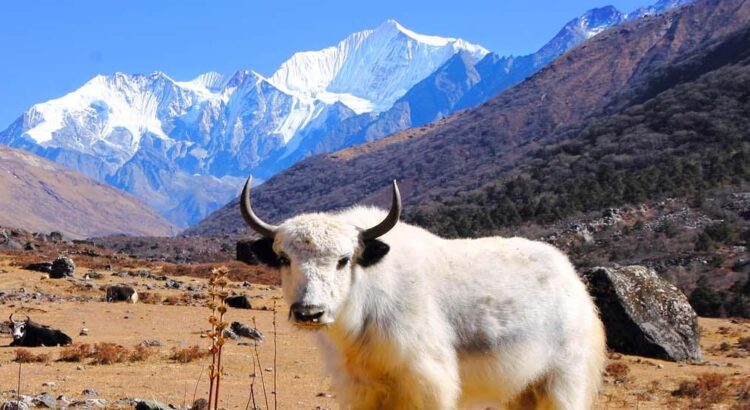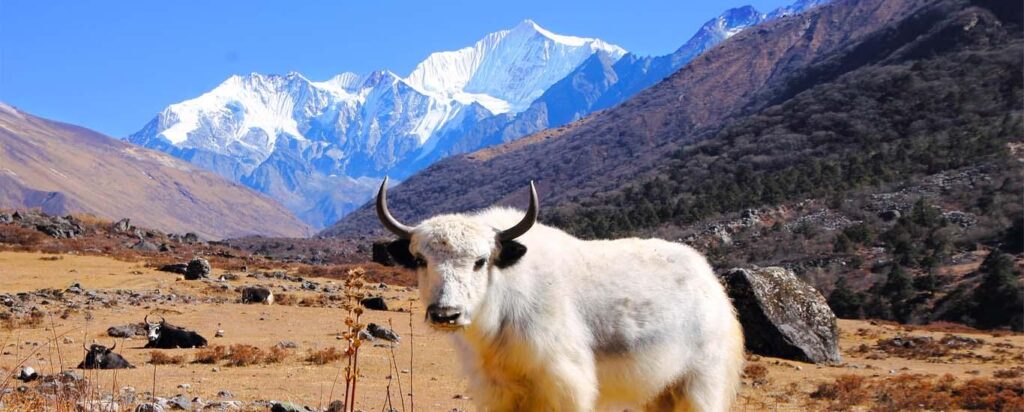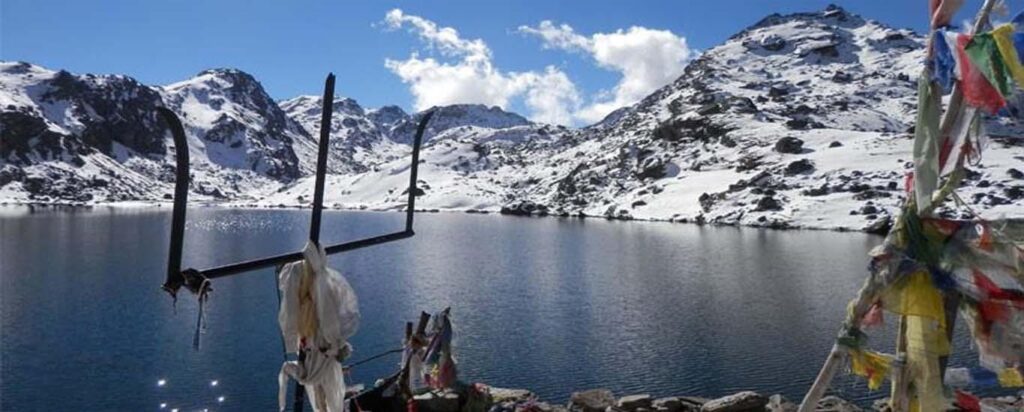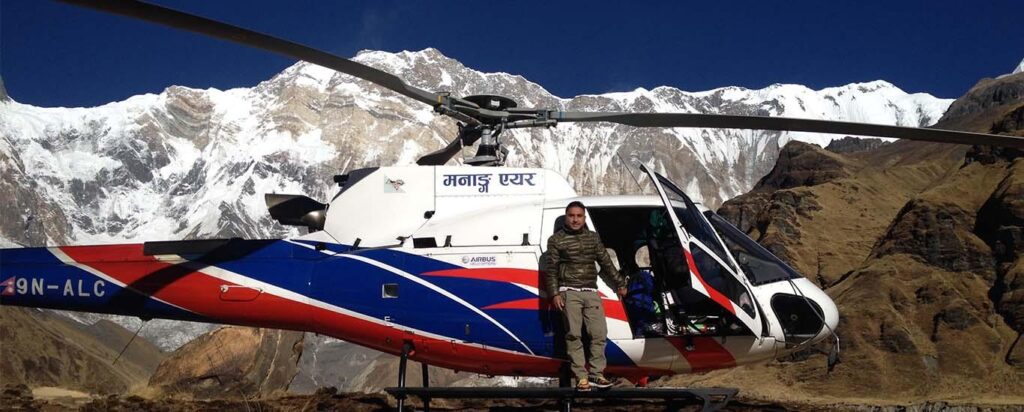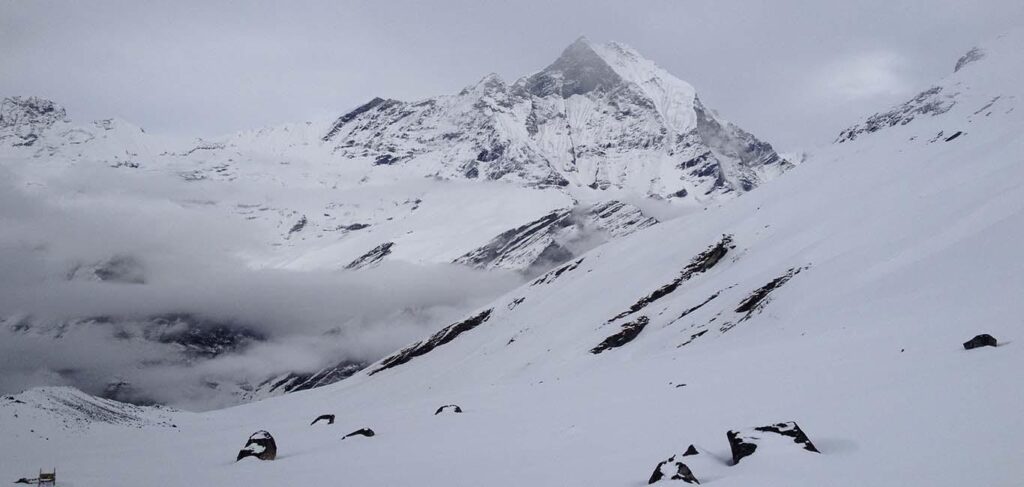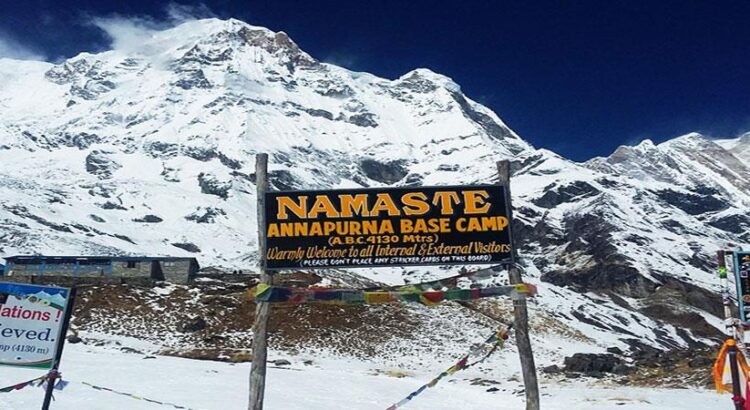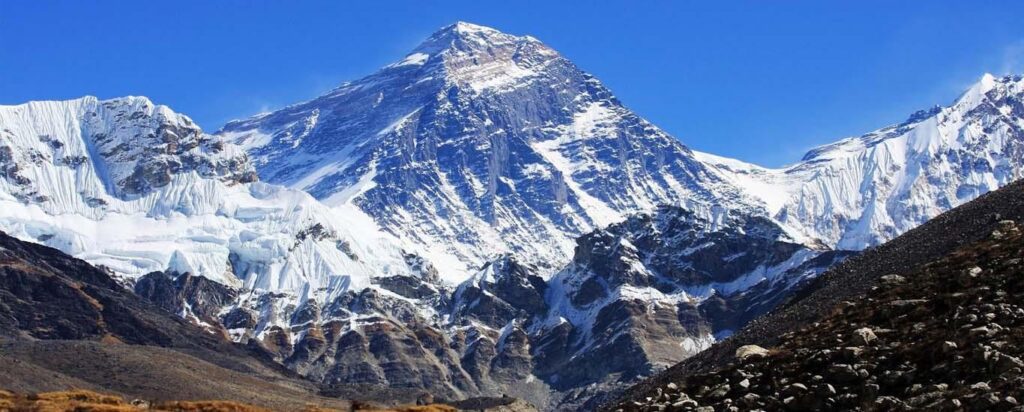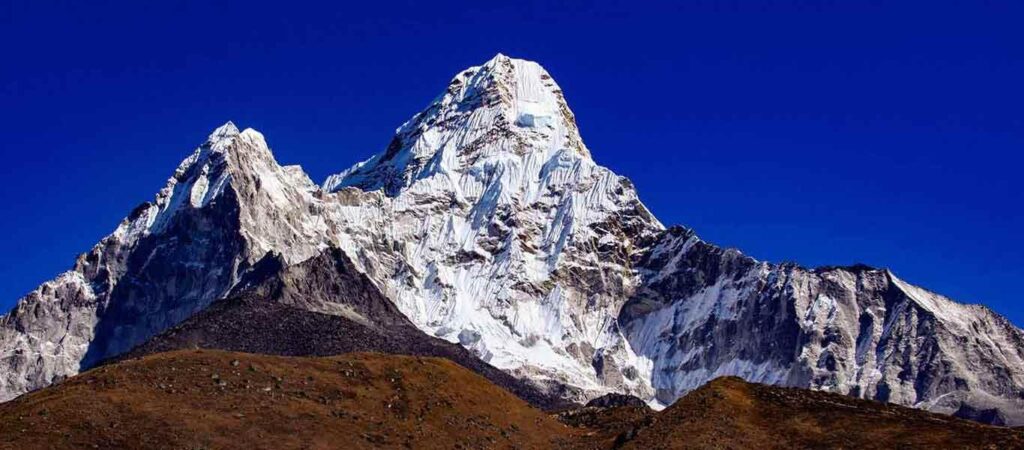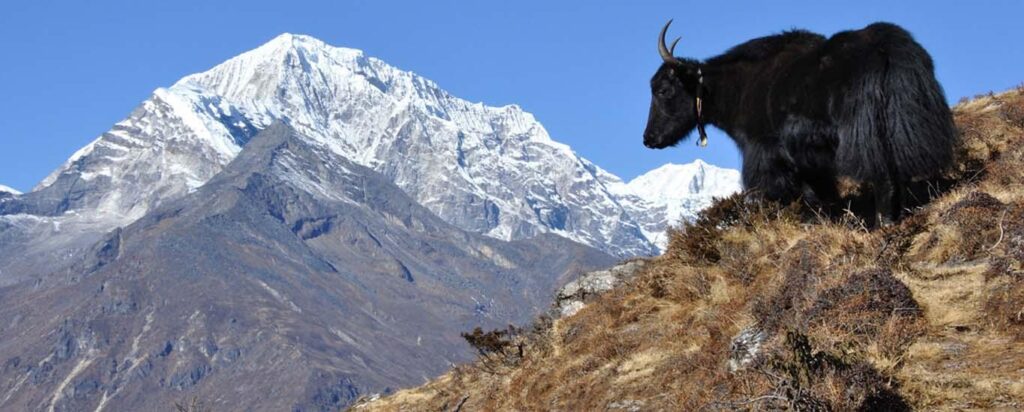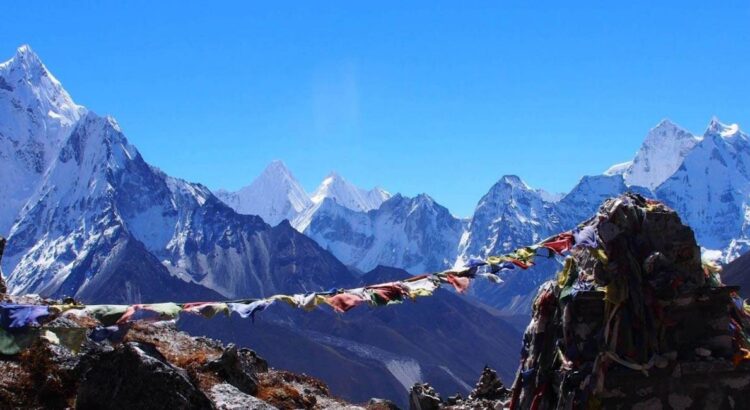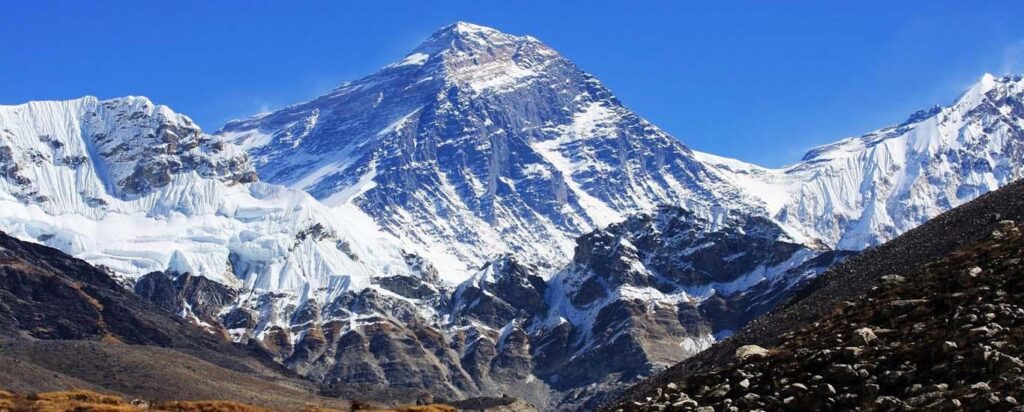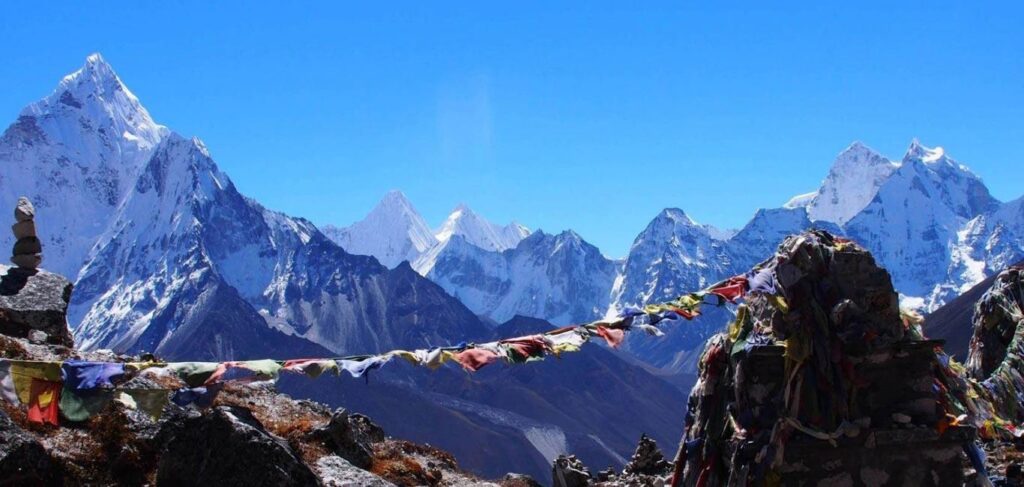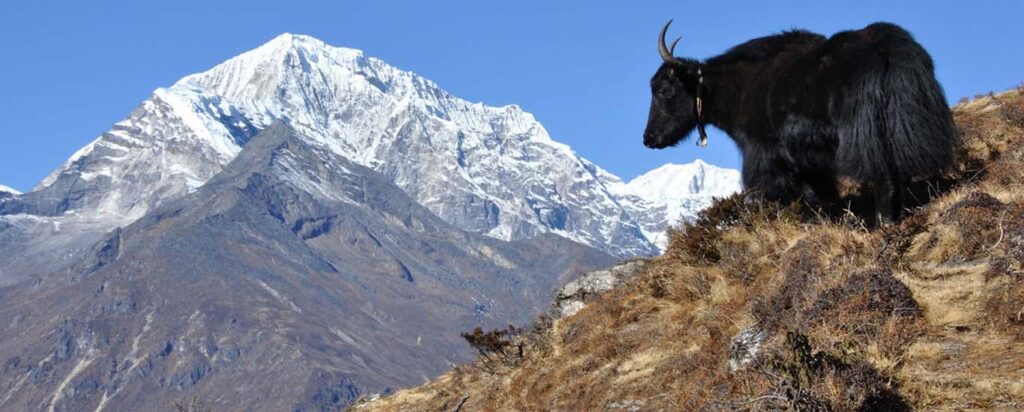Mardi Himal Trek Introduction
Welcome to Nepal, where adventure meets tranquility amidst the majestic Himalayas. Embark on an unforgettable journey with the Mardi Himal Trek, a hidden gem offering unparalleled vistas and cultural immersion. Nestled in the Annapurna region, this off-the-beaten-path trek unveils breathtaking panoramas of snow-capped peaks, lush rhododendron forests, and authentic mountain villages. Whether you’re a seasoned trekker or a novice adventurer, our expert guides ensure a safe and enriching experience. Discover the allure of Mardi Himal and unlock the secrets of Nepal’s natural wonders with us. Start your odyssey today and create memories to last a lifetime.
Trip Highlights of Mardi Himal Trek
- Spectacular views of the Annapurna range including Machhapuchhre (Fishtail) and Mardi Himal.
- Explore pristine rhododendron forests, home to diverse flora and fauna.
- Immerse yourself in the rich culture of Gurung and Magar ethnic communities along the trail.
- Experience authentic Nepalese hospitality in mountain lodges and tea houses.
- Enjoy panoramic sunrise and sunset vistas from High Camp and Mardi Himal Base Camp.
- Encounter rare wildlife such as Himalayan thar, musk deer, and various bird species.
- Customize your trekking itinerary with options for shorter or longer routes based on your preferences and fitness level.
- Capture stunning photographs of snow-capped peaks, verdant valleys, and cascading waterfalls to cherish forever.
Mardi Himal Trek Itinerary
DAY 01: Arrival in TIA Kathmandu Nepal (1400m)
DAY 02: Drive from Kathmandu to Kande (1,770m) via Pokhara, Trek to Australian Camp (2,000m), 6-7 hours’ drive, 1 hour trek
DAY 03: Trek from Australian Camp to Forest Camp (2650m), 5 hours trek
DAY 04: Trek from Forest Camp to High Camp (3,550m), 6-7 hours trek
DAY 05: Trek from High Camp to Mardi Himal Base Camp (4,450m), 7 hours trek
DAY 06: Trek from High Camp to Siding (1,880m), 5-6 hours trek
DAY 07: Drive from Siding to Pokhara, free day
DAY 08: Pokhara to Kathmandu Flight or Drive (25 Min Flight- 6-7 Hours Drive)
DAY 09: Departure from Kathmandu
Why Choose Mardi Himal Trek?
Choose the Mardi Himal Trek for an unparalleled adventure that combines awe-inspiring natural beauty with cultural immersion. Unlike the more crowded routes, Mardi Himal offers a serene escape into the heart of the Annapurna region, where you can relish uninterrupted views of the majestic Himalayas, including the iconic Machhapuchhre (Fishtail) and Mardi Himal peaks. The trail winds through pristine rhododendron forests, providing opportunities for wildlife sightings and peaceful reflection. Immerse yourself in the warmth of Gurung and Magar hospitality as you stay in charming mountain lodges and tea houses along the way. With customizable itineraries catering to various fitness levels, the Mardi Himal Trek ensures a rewarding experience for both seasoned trekkers and novices alike. Whether you seek adventure, cultural enrichment, or simply a rejuvenating escape amidst nature, the Mardi Himal Trek promises an unforgettable journey that will leave you with cherished memories for a lifetime.
Why is the Mardi Himal Trek famous?
The Mardi Himal Trek has gained fame for several reasons:
01. Stunning Views: The trek offers breathtaking views of the Annapurna range, including the iconic Machhapuchhre (Fishtail) and Mardi Himal peaks. These panoramic vistas attract adventurers and nature enthusiasts from around the world.
02. Serenity and Solitude: Compared to more popular trekking routes in the Annapurna region, such as the Annapurna Circuit or Everest Base Camp trek, Mardi Himal offers a quieter and more serene experience. Trekkers can enjoy the tranquility of the Himalayan wilderness without the crowds.
03. Cultural Experience: The trek takes you through traditional Gurung and Magar villages, providing opportunities to immerse yourself in the local culture. You can interact with friendly villagers, experience their hospitality, and learn about their unique way of life.
04. Diverse Terrain: From lush rhododendron forests to high alpine meadows, the Mardi Himal Trek traverses diverse landscapes, offering trekkers a variety of scenery to enjoy along the way.
05. Accessibility: The trailhead for the Mardi Himal Trek is easily accessible from Pokhara, a popular tourist destination in Nepal. This makes it convenient for travelers to embark on the trek without the need for lengthy travel or complicated logistics.
Overall, the Mardi Himal Trek has become famous for its stunning natural beauty, cultural richness, and the opportunity it provides for a peaceful and immersive Himalayan adventure.
Accommodation Facilities in Mardi Himal Trekking Routes
Accommodation facilities along the Mardi Himal trekking routes primarily consist of cozy mountain lodges and tea houses, offering basic yet comfortable amenities for trekkers. These accommodations typically provide clean rooms with twin beds or dormitory-style sleeping arrangements, shared bathrooms with hot showers, and communal dining areas serving hearty meals. While the facilities may vary slightly depending on the location, trekkers can expect warm hospitality and stunning mountain views throughout their stay, providing a rejuvenating retreat after a day of exploration in the Himalayan wilderness.
Dining Options Along Mardi Himal Trekking Routes
Dining options along the Mardi Himal trekking routes offer a blend of hearty local cuisine and familiar international dishes to cater to the diverse tastes of trekkers. Mountain lodges and tea houses typically serve three meals a day, including breakfast, lunch, and dinner, with menus featuring Nepali staples like dal bhat (rice and lentils), momos (dumplings), and hearty soups, as well as Western favorites like pasta, pizza, and sandwiches. Vegetarian and vegan options are readily available, and special dietary requests can often be accommodated with advance notice. Trekkers can refuel with delicious meals amidst breathtaking mountain vistas, ensuring a satisfying dining experience throughout their Mardi Himal adventure.
Transportation Options for Mardi Himal Trek
Transportation options for the Mardi Himal Trek typically involve a scenic drive from Pokhara to the starting point of the trek, which is usually either Kande or Phedi. Trekkers can arrange private or shared vehicles from Pokhara to reach these trailheads, with the journey taking approximately 1.5 to 2 hours, depending on road conditions and traffic. Alternatively, some trekkers opt for public buses or taxis for a budget-friendly option. Once the trek is completed, transportation back to Pokhara can be arranged from the trek endpoint, usually Siding or Lumre, via private vehicles or pre-arranged transport services. This ensures a convenient and hassle-free journey to and from the Mardi Himal Trek, allowing trekkers to focus on enjoying the adventure and stunning landscapes along the way.
Necessary Permits for Mardi Himal Trek
Several permits are necessary for the Mardi Himal Trek, ensuring a smooth and legal journey through the stunning Himalayan landscapes. The Annapurna Conservation Area Permit (ACAP) is required for all trekkers entering the Annapurna region, including the Mardi Himal area. Additionally, the Trekkers’ Information Management System (TIMS) card is essential for tracking trekkers and providing assistance in case of emergencies. These permits can be obtained either independently or through authorized trekking agencies in Kathmandu or Pokhara. It’s crucial to ensure that you have these permits before embarking on your Mardi Himal adventure, as they are mandatory for entry into the conservation area and help support conservation efforts and ensure your safety throughout the trek.
Guide and Porter Services for Mardi Himal Trek
Guide and porter services for the Mardi Himal Trek offer invaluable assistance and support, enhancing the overall trekking experience. Experienced local guides provide expert knowledge of the terrain, cultural insights, and safety guidance throughout the journey, ensuring trekkers navigate the trails safely and efficiently. They also assist with route planning, accommodation arrangements, and communication with locals along the way. Additionally, hiring a porter can alleviate the burden of carrying heavy backpacks, allowing trekkers to enjoy the trek more comfortably. Porters are skilled in managing loads and navigating the rugged terrain, enabling trekkers to focus on soaking in the breathtaking scenery and cultural encounters. Together, guide and porter services contribute to a memorable and fulfilling adventure in the pristine Himalayan landscapes of Mardi Himal.
Estimated Costs for Permits, Accommodations, Transportation, Meals, Guides, and Porters
Permits: The Annapurna Conservation Area Permit (ACAP) typically costs around USD 30 per person, while the Trekkers’ Information Management System (TIMS) card is approximately USD 10.
Accommodations: Costs for staying in mountain lodges and tea houses along the Mardi Himal trek route range from USD 10 to USD 30 per night, depending on the facilities and location.
Transportation: Private vehicle transportation from Pokhara to the trek starting point (Kande or Phedi) can vary but is roughly USD 30 to USD 50 per way.
Meals: Meals at tea houses usually range from USD 5 to USD 15 per meal, depending on the menu items and location.
Guides: Hiring a licensed guide typically costs around USD 25 to USD 35 per day, providing valuable assistance and insights throughout the trek.
Porters: Porter services range from USD 15 to USD 25 per day, with additional charges for carrying heavier loads, offering relief from carrying heavy backpacks and ensuring a more enjoyable trekking experience.
Best season for Mardi Himal Trek
The best season for the Mardi Himal Trek is typically considered to be during the spring (March to May) and autumn (September to November) months. During these seasons, the weather is generally stable with clear skies, making it ideal for trekking and enjoying stunning views of the Himalayan peaks. Spring brings vibrant rhododendron blooms along the trail, adding to the picturesque landscape, while autumn offers crisp, cool temperatures and excellent visibility. Both seasons provide comfortable daytime temperatures for trekking, while avoiding the monsoon rains of summer and the harsh winter cold and snow. However, it’s essential to check current weather conditions and trail conditions before planning your trek, as weather patterns can vary from year to year.
Mardi Himal Trek Difficulty
The Mardi Himal Trek is considered to be of moderate difficulty, suitable for trekkers with a reasonable level of fitness and some prior hiking experience. While not as strenuous as some of the more challenging treks in the region, such as the Annapurna Circuit or Everest Base Camp trek, it still involves steep ascents and descents, as well as varying trail conditions. Trekkers will encounter sections of narrow paths, rocky terrain, and occasional steep inclines, which require endurance and balance. However, the shorter duration of the Mardi Himal Trek and the availability of comfortable accommodation along the route make it accessible to a wide range of trekkers. With proper preparation, including regular physical activity and acclimatization to the altitude, most adventurers can enjoy the stunning beauty of the Mardi Himal region without encountering significant difficulty.
Distance of Mardi Himal from Kathmandu
The distance from Kathmandu to Mardi Himal varies depending on the mode of transportation chosen and the starting point of the trek. Generally, the trek to Mardi Himal begins from either Kande or Phedi, which are located near Pokhara. Kathmandu to Pokhara by road is approximately 200 kilometers (124 miles) and takes around 6 to 8 hours by bus or private vehicle, depending on road conditions and traffic. Once in Pokhara, trekkers typically arrange transportation to the starting point of the trek, which is an additional distance from the city center. The trekking route from Kande or Phedi to Mardi Himal covers approximately 64 kilometers (40 miles) round trip, offering stunning views of the Himalayan landscape along the way.
Distance of Mardi Himal from Pokhara
The distance from Pokhara to Mardi Himal varies depending on the starting point of the trek, which is typically either Kande or Phedi. Kande is approximately 20 kilometers (12 miles) away from Pokhara, while Phedi is around 18 kilometers (11 miles) away. The journey from Pokhara to these trailheads can be covered by road, which takes approximately 1.5 to 2 hours, depending on traffic and road conditions. Trekkers can arrange private or shared vehicles from Pokhara to reach either Kande or Phedi, from where they can begin their trek to Mardi Himal.
Essential Trekking Equipment for Mardi Himal Trek
Footwear: Sturdy, broken-in hiking boots with good ankle support
Clothing: Moisture-wicking base layers, insulated mid-layers, waterproof and windproof outer layers
Backpack: Comfortable, well-fitted backpack with padded shoulder straps and hip belt
Sleeping Bag: Lightweight sleeping bag rated for cold temperatures
Trekking Poles: Adjustable trekking poles for stability and support on uneven terrain
Headlamp or Flashlight: Essential for navigating trails in low light conditions or during early morning starts
Water Bottle or Hydration System: Sufficient capacity to stay hydrated throughout the trek
First Aid Kit: Including basic medications, blister treatment, and personal medications
Sun Protection: Sunglasses, sunscreen, and lip balm with high SPF
Navigation: Map, compass, or GPS device, along with a guidebook or trekking itinerary
Personal Items: Toiletries, hand sanitizer, wet wipes, and any personal hygiene products
Snacks: High-energy snacks like nuts, dried fruits, and energy bars for quick fueling during the trek
Camera: To capture the stunning landscapes and memorable moments along the way
Portable Charger: Power bank or solar charger for charging electronic devices
Emergency Shelter: Lightweight emergency shelter such as a bivy sack or emergency blanket
Permits and Documentation: Valid permits, identification, and emergency contact information
Mardi Himal Trek Route
The Mardi Himal Trek route typically starts from either Kande or Phedi, near Pokhara, and follows a well-defined trail through picturesque villages, lush forests, and high alpine meadows. From Kande or Phedi, trekkers ascend gradually through terraced fields and rhododendron forests, passing through charming Gurung villages like Pothana and Deurali. The trail then leads to Forest Camp and Low Camp, offering stunning views of the Annapurna range along the way. As trekkers continue higher, they reach High Camp, where they can enjoy panoramic vistas of Machhapuchhre (Fishtail) and Mardi Himal. The final push leads to Mardi Himal Base Camp, offering close-up views of the towering peaks. Trekkers can then retrace their steps back to Kande or Phedi to conclude the trek.
Tips for Preventing Altitude Sickness on the Mardi Himal Trek
01. Acclimatize Properly: Gradually ascend to higher altitudes, allowing your body time to adjust to the reduced oxygen levels. Plan rest days in your itinerary to aid acclimatization.
02. Stay Hydrated: Drink plenty of water to avoid dehydration, which can exacerbate altitude sickness. Aim for at least 3-4 liters of water per day and avoid alcohol and caffeine.
03. Eat Regularly: Maintain a balanced diet with carbohydrate-rich foods to fuel your body for the trek. Avoid heavy or greasy meals that may be harder to digest at higher altitudes.
04. Ascend Slowly: Trek at a steady pace, avoiding rapid ascents that can increase the risk of altitude sickness. Take frequent breaks to catch your breath and admire the scenery.
05. Monitor Symptoms: Be aware of the symptoms of altitude sickness, including headache, nausea, dizziness, and fatigue. Inform your guide or trekking companions if you experience any symptoms.
06. Medication: Consider carrying medication such as acetazolamide (Diamox) to prevent and alleviate altitude sickness symptoms. Consult with a healthcare professional before starting any medication regimen.
07. Descend if Necessary: If symptoms persist or worsen despite rest and hydration, descend to a lower altitude immediately. It’s essential not to ignore warning signs of altitude sickness, as it can be life-threatening if left untreated.
08. Stay Warm: Dress in layers to regulate body temperature and avoid getting too cold, which can exacerbate altitude sickness symptoms. Bring warm clothing, including a hat, gloves, and insulated layers.
09. Avoid Overexertion: Pace yourself and listen to your body’s cues. Avoid overexertion and strenuous activity, especially during the initial days of the trek when acclimatizing to higher altitudes.
10. Know the Signs: Familiarize yourself with the early signs of altitude sickness and be prepared to take action if needed. Awareness and prompt response are key to preventing altitude-related complications during the Mardi Himal Trek.
Mardi Himal Trek FAQ(s)
01. What is the Mardi Himal Trek?
The Mardi Himal Trek is a scenic trekking route in the Annapurna region of Nepal, offering stunning views of the Himalayas, including Machhapuchhre (Fishtail) and Mardi Himal peaks.
02. How long is the Mardi Himal Trek?
The Mardi Himal Trek typically takes around 7 to 9 days to complete, depending on the chosen itinerary and trekking pace.
03. What is the best time to do the Mardi Himal Trek?
The best time to do the Mardi Himal Trek is during the spring (March to May) and autumn (September to November) seasons when the weather is stable and the views are clear.
04. Is previous trekking experience required for the Mardi Himal Trek?
While previous trekking experience is beneficial, the Mardi Himal Trek is suitable for beginners with a reasonable level of fitness and preparation.
05. Do I need a guide for the Mardi Himal Trek?
While it’s not mandatory to hire a guide, it’s highly recommended for safety, navigation, and cultural insights along the trail.
06. What permits are required for the Mardi Himal Trek?
Trekkers need an Annapurna Conservation Area Permit (ACAP) and a Trekkers’ Information Management System (TIMS) card to trek in the Mardi Himal area.
07. Are there accommodation and food options along the Mardi Himal Trek?
Yes, there are plenty of tea houses and lodges offering basic accommodation and meals along the Mardi Himal Trek route.
08. How difficult is the Mardi Himal Trek?
The Mardi Himal Trek is considered to be of moderate difficulty, with some steep ascents and descents but manageable for most trekkers with average fitness levels.
09. Are there ATM facilities along the Mardi Himal Trek route?
ATM facilities are limited along the trekking route, so it’s advisable to carry enough cash in Nepali Rupees to cover expenses.
10. What kind of weather can I expect during the trek?
Weather in the Himalayas can be unpredictable, but during the trekking season, expect mild to warm days and cold nights at higher elevations.
11. Is altitude sickness a concern on the Mardi Himal Trek?
While the maximum altitude reached on the Mardi Himal Trek is relatively low compared to other treks in the region, it’s essential to acclimatize properly and watch for symptoms of altitude sickness.
12. Can I extend or customize the Mardi Himal Trek itinerary?
Yes, many trekking agencies offer flexible itineraries that can be customized to suit your preferences and time constraints.
13. Is it possible to trek to Mardi Himal independently?
Yes, it’s possible to trek independently, but it’s essential to be well-prepared, including having a detailed map, proper gear, and knowledge of the route.
14. What should I pack for the Mardi Himal Trek?
Essential items to pack include sturdy hiking boots, warm clothing, a sleeping bag, a first aid kit, and high-energy snacks.
15. Are there any side trips or extensions available from Mardi Himal?
Yes, there are several side trips and extensions available, including treks to Annapurna Base Camp or combining the Mardi Himal Trek with other nearby trails for a longer adventure.
Mardi Himal Trek Conclusion
In conclusion, embarking on the Mardi Himal Trek in 2024/25 promises an unforgettable adventure amidst the awe-inspiring Himalayan landscapes of Nepal. From the picturesque villages and lush forests to the breathtaking mountain vistas, every step of the journey offers a glimpse into the beauty and tranquility of the Annapurna region. With careful planning, proper preparation, and a spirit of adventure, trekkers can explore this hidden gem and create memories to last a lifetime. Whether you’re a seasoned trekker or a first-time adventurer, the Mardi Himal Trek beckons with its pristine beauty, cultural richness, and the promise of discovery. So, lace up your boots, breathe in the crisp mountain air, and let the journey begin.




